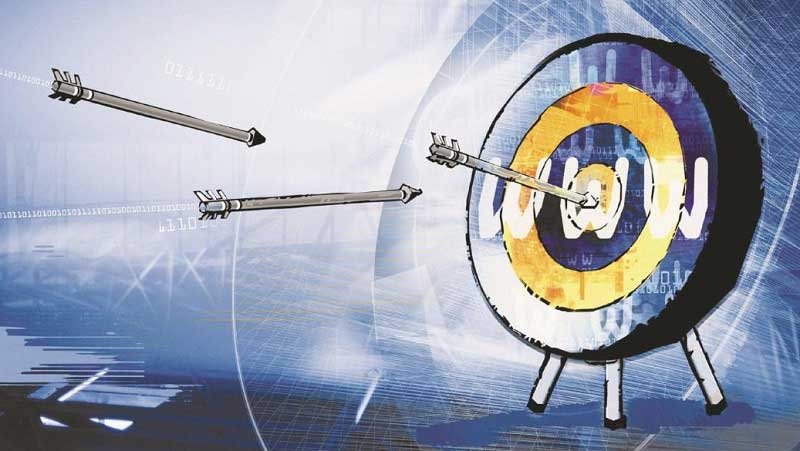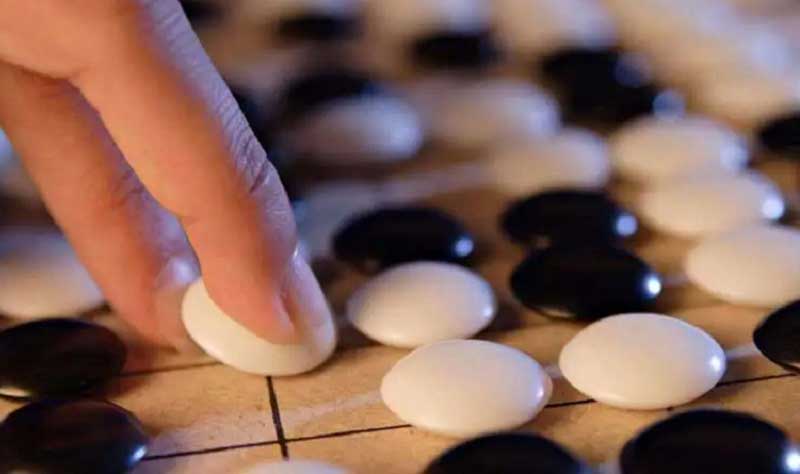“The Art of War“, also known as “Wu Sun Tzu’s Art of War”, “Sun Tzu” and “Sun Wu’s Art of War”, has 13 chapters in total. It is the earliest extant military book in China and the earliest military work in the world. It is known as the “Sacred Book of Military Science” and “The First Book on Military Affairs in Antiquity”.
The Art of War is an outstanding representative of Chinese military culture, and the general military laws it summarizes and reveals are of irreplaceable significance for the construction and development of contemporary military theory; its dialectical and dynamic way of thinking and pragmatic and enterprising cultural spirit have also penetrated into areas of social life other than the military, and provide inexhaustible cultural inspiration for people’s thinking methods and modes of behavior. From the philosophical level, what is most recognized in The Art of War is its strategic thinking.We can summarize this in 8 strategies.
1.Overall Situation Strategy: Those Who Neglect Overall Planning Cannot Effectively Plan for Specific Areas

The overall situation determines the survival of a domain. The key to success or failure in any endeavor lies in the ability to recognize and master the overall situation. Seeking an understanding of the overall situation requires a high level of insight and macro-control, staying steps ahead everywhere, ready to seize the first opportunity.
The essence of “Sun Tzu’s Art of War” is to be good at understanding the factors that determine the outcome of a war from an overall perspective, grasping the secrets of defeating the enemy, and mastering the methods of running an army and using troops.
Whether it is the analysis of political and military master-slave relationship, economic and war dependence on the nature of the exposition, or is the enemy and our strategic advantages and disadvantages of the situation of the judgment, the operation of the guiding principles of the coordination of the various levels, it has a distinctive wholeness, systematic, global, complementary characteristics.
2.Key Strategy: Grasping Key Points and Emphasizing Priorities

Grasping the key points and emphasizing the priorities is the lifeline of doing all the work well. “Sun Tzu’s Art of War” is worthy of being called the “Holy Text of Military Science”. It has a very profound explanation of this principle. According to it, even if you have a huge advantage, if you don’t pay attention to priorities, you will be surrounded by enemies on all sides, then this kind of The advantage will no longer exist, but it will be extremely passive. The correct method should be to rationally allocate limited resources, highlight key points, and concentrate superior forces to achieve breakthroughs.
3. Innovation Strategy: Conceptual Innovation, Tactical Innovation, and Innovative Thinking

The vitality of everything is rooted in the spirit of pioneering and innovation. The spirit of innovation has been integrated into the whole level of The Art of War, which is the fundamental sign that The Art of War can surpass the theory of military science of its predecessors and lead the way.
The innovation of The Art of War includes the innovation of concepts, the innovation of battle tactics, the innovation of thinking, and so on, at many levels and in many aspects. Sun Tzu’s Art of War abandoned the tradition of “military etiquette”, which was based on ritual and benevolence, and put forward a series of theories of military science that reflected the requirements of the times and catered to the new war situation.
- Replace “beat the drum and then fight, do not cheat each other” with “soldiers are tricky”;
- Replace “do not harm the elderly and children” with “plunder the countryside and divide the people” and “fall the city and destroy the country”;
- Replace “After defeating the enemy, the pursuit within the battlefield should not exceed a hundred paces, while the pursuit outside the battlefield should not exceed a hundred miles in depth.” with “The sentiment of the army is to be quick and to take advantage of the enemy’s shortcomings.”
Through these all-round innovations, the theory of military science has become a guiding principle of war that keeps pace with the times and meets the reality, realizing a revolutionary leap in classical Chinese military science.
4.Opportunity strategy: The crucial aspect of a successful strategy and tactics is timely assessment of the situation

Opportunity refers to the timing, which is the basic condition of the trend of victory or defeat in the battlefield. On the issue of utilizing “timing”, on the one hand, we should naturally be prudent and not act rashly. On the other hand, we should be better at grasping the opportunity.
The essence of The Art of War can be summarized as placing great importance on creating and seizing opportunities. It emphasizes that on the basis of possessing strong military power, generals should give full play to their subjective initiative and actively create and make use of favorable war opportunities in order to achieve war victory by surprise. This means finding and fighting for the most favorable conditions by creating situations, conforming to them, and confusing the enemy.
Those who are good at fighting should be good at utilizing dangerous situations and acting quickly, with war opportunities like open bows and arrows, and acting quickly like launching arrows. Once the opportunity is seized, decisive action should be taken to transform it into a winning reality, at first the enemy may be defenseless, followed by a rapid attack, so that the enemy can not fight.
5.Active strategy: “Impose your will on your enemy, but do not allow your enemy’s will to be imposed on you.”

On the battlefield, seizing the initiative means that the army has the power of freedom of action. The loss of freedom of action means the risk of defeat. Sun Tzu long ago deeply understood this truth and expressed the vital importance of seizing the initiative in succinct words: “Influence others without being influenced by them,” i.e., to be good at mobilizing the enemy without being swayed by him. This principle is the core idea of winning war.”
In order to ensure that he seized the initiative, Sun Tzu elaborated on several aspects of the strategy: firstly, misleading the enemy by displaying falsehoods so as to expose his weaknesses, and then striking at him fiercely. Secondly, adopt the tactic of ‘striking one by ten’, concentrating superior forces and striking the enemy decisively and forcefully. Thirdly, choose the right direction for the main attack and attack where the enemy cannot help but rescue. Fourth, avoid the enemy’s powerful counterattacks and wait for the right moment to attack his moments of exhaustion and laxity. Fifth, gain a deep understanding of the terrain and weather of the battlefield, as well as employing all means to gain a comprehensive understanding of the enemy. Sixth, it emphasizes that in war, both the strength of troops and the battlefield environment are constantly changing, and that one should be flexible and adapt to changes in the enemy’s situation at any time in order to achieve victory.
6.Advantage strategy:The victorious army first strives for victory and then seeks battle

In military struggles, although creative strategies and tactics are crucial, fundamentally speaking, strong military strength is the decisive factor that truly determines the outcome of a war. Because whether it is conducting battles or sieges, it is inseparable from the clever use of military strength. Even diplomatic mediation and negotiation must be backed by strong military strength.
Sun Tzu has a clear understanding of this issue, comprehensively and systematically discussed the status and role of military forces in the war, as well as the principles of military forces and the methods and ways of practical construction. Specifically, he put forward the following important views:
- “Ensure the undefeated advantage before the war.” This is the principle of formulating strength policies.
- “First ensure the advantage in the war, and then consider further fighting.” This is a strategic application of a strong policy.
- “When our army cannot defeat the enemy, the defense method should be adopted. When it is possible to overcome, attack should be carried out.” Defense is because of insufficient victory conditions, and the offense is more than due to victory conditions. This is the principle of strategic use of strength.
- “Maintaining military discipline and strictly implementing laws and regulations” refers to the basic principles of developing military forces.
Sun Tzu believes that the guiders of the war must be based on the quality of the material conditions and the strength of military strength, and flexibly adopt two different forms of offensive and defensive to achieve the purpose of protecting themselves and eliminating the enemy in the war.
7.Using unconventional methods to solve problems or address challenges

Alternative thinking and non-traditional actions can often produce special results and achieve unexpected gains, which is called “attacking the enemy’s deficiencies and taking advantage of the enemy’s unpreparedness”. One of the main reasons why The Art of War enjoys the reputation of being the “granddaddy of all military talks” is that it tends to strike out of the box, and is often able to articulate profound philosophies in unexpected ways.
For example, the usual approach to the implementation of military rules and regulations is to strictly follow rules and regulations and to enforce explicit rules. The Art of War, while recognizing and emphasizing such rules, believes that, in certain circumstances, it is necessary to adopt unconventional methods, to win by surprise, and to allow for variations and unusual initiatives. Thus, in order to motivate soldiers to fight, it is possible, when necessary, to go beyond the usual rewards, to be unconventional, to issue orders that are not in accordance with the rules and regulations, and to make people unpredictable. Another example is that, in the stationing and deployment of the army, the usual practice is to follow the “advance close to the water source, with the back to the high ground”, but in special circumstances, the opposite is true: “Lead the enemy to a lifeless place, and then you can save yourself; lead the enemy to a dead place, and then you can survive! “. Again, when dealing with the issue of the superiority of army personnel, not only has it been repeatedly emphasized that absolute numerical superiority is required, “ten men together besiege the enemy, five men together attack the enemy”, but it has been advocated that personnel should be streamlined and compressed. Thus, the adoption of non-traditional ways of thinking and unique initiatives is one of the distinctive features of rational thinking in The Art of War.
8.Strong sense of worry and danger

Among the cultural connotations of Sun Tzu’s The Art of War, there is one element that is often overlooked but is extremely important, and that is a strong sense of worry and danger. As a great military scientist, Sun Tzu had a deep understanding of the dangers of war and the critical nature of strategy. Therefore, The Art of War is filled with the value of “prudent war and military prudence”, and permeated with the cultural concept of “stopping war with war”. This strong sense of anxiety permeates the entire text, not only influencing the principles of strategy, but also having a far-reaching impact on guiding the behavior of nations, armies and individuals.
This sense of urgency not only runs through the level of war concepts and strategic theories, but is also reflected in the details of specific combat guidance. It was evident not only before and during the war, but also in dealing with problems after the war. This sense of urgency is not only emphasized in difficult times, but also repeatedly emphasized in good times, such as “The army is an important matter for the country, involving life and death, and must be considered carefully”, “If stupid mistakes are made in the war and strength and wealth are wasted, other The princes will take the opportunity to revolt, and even wise men cannot deal with the aftermath.” These maxims embody a profound sense of urgency and reflect an outstanding thinker’s extreme concern for the safety of the country, the life and death of the people, and even the fate of mankind. Precisely because “The Art of War” has a strong sense of urgency, it transcends the level of ordinary military books and is elevated to the height of a great philosophical theory.
The Art of War always emphasizes the principle that a sense of anxiety is indispensable for all. People should not only be good at rising from adversity, but also at ending well in good times, be wary of complacency, avoid hasty success, and be “as cautious and careful in the face of war as if they were walking on thin ice.” This is the ideal attitude in the world, and it is also the modern awareness that we should have when reading The Art of War today.
Articles you may be interested in
The Art of War Summar by Chapter
Who is Sun Tzu? A brief introduction to Sun Tzu’s life
